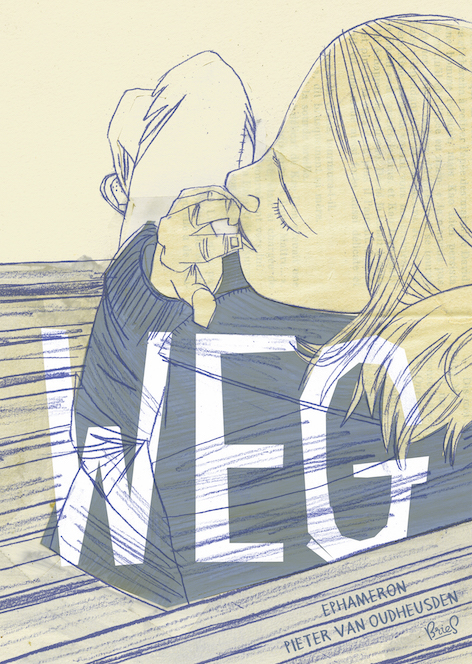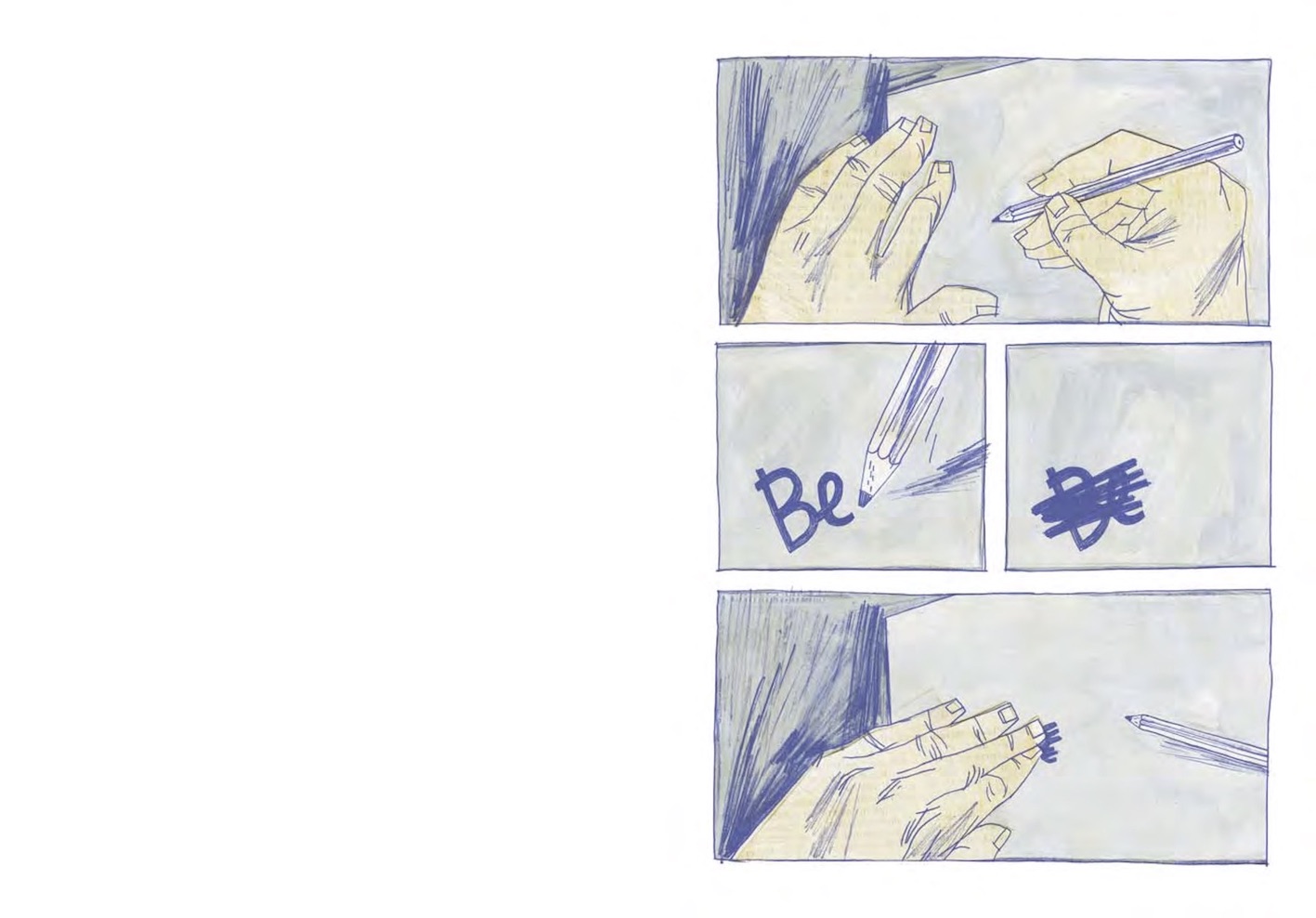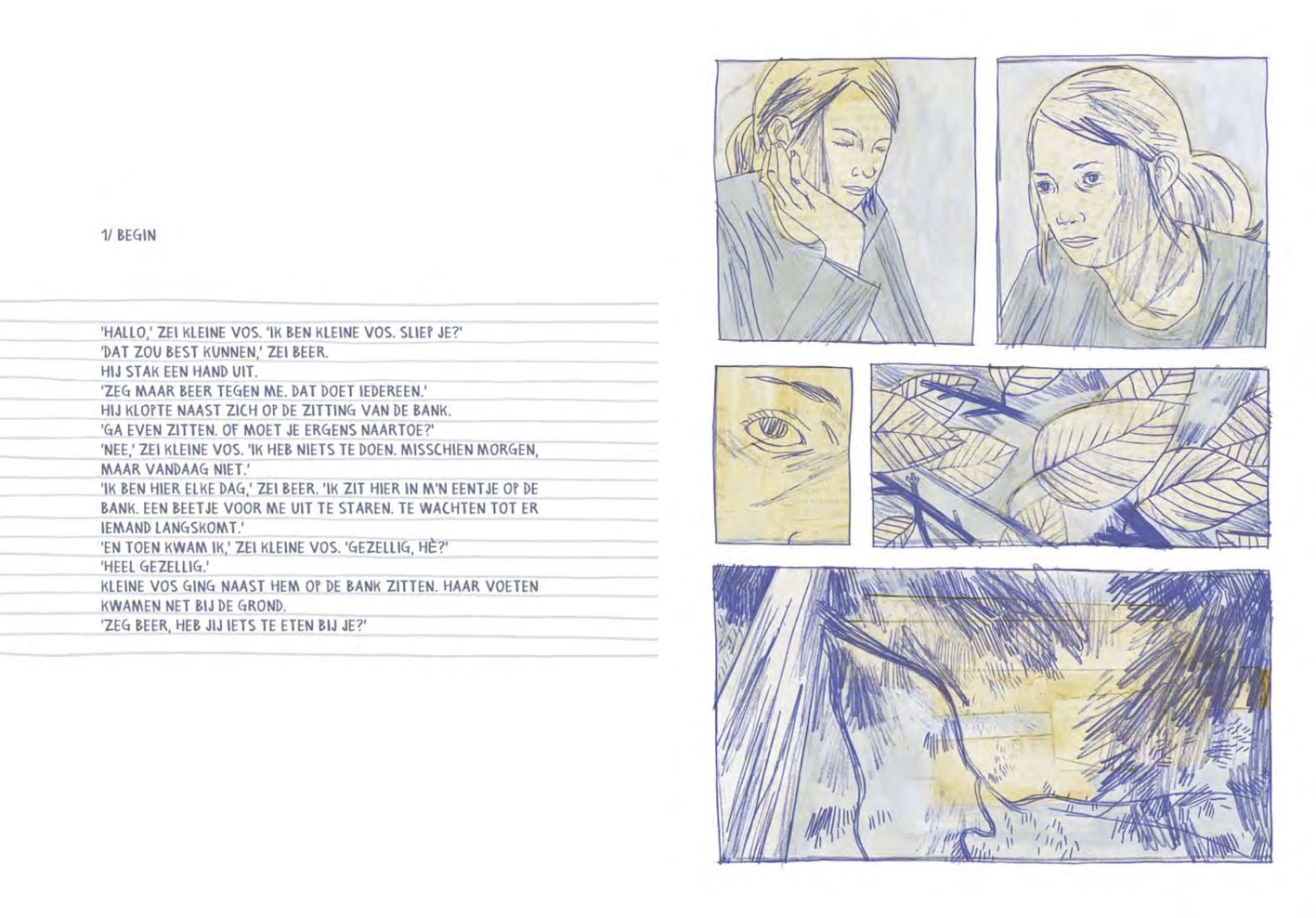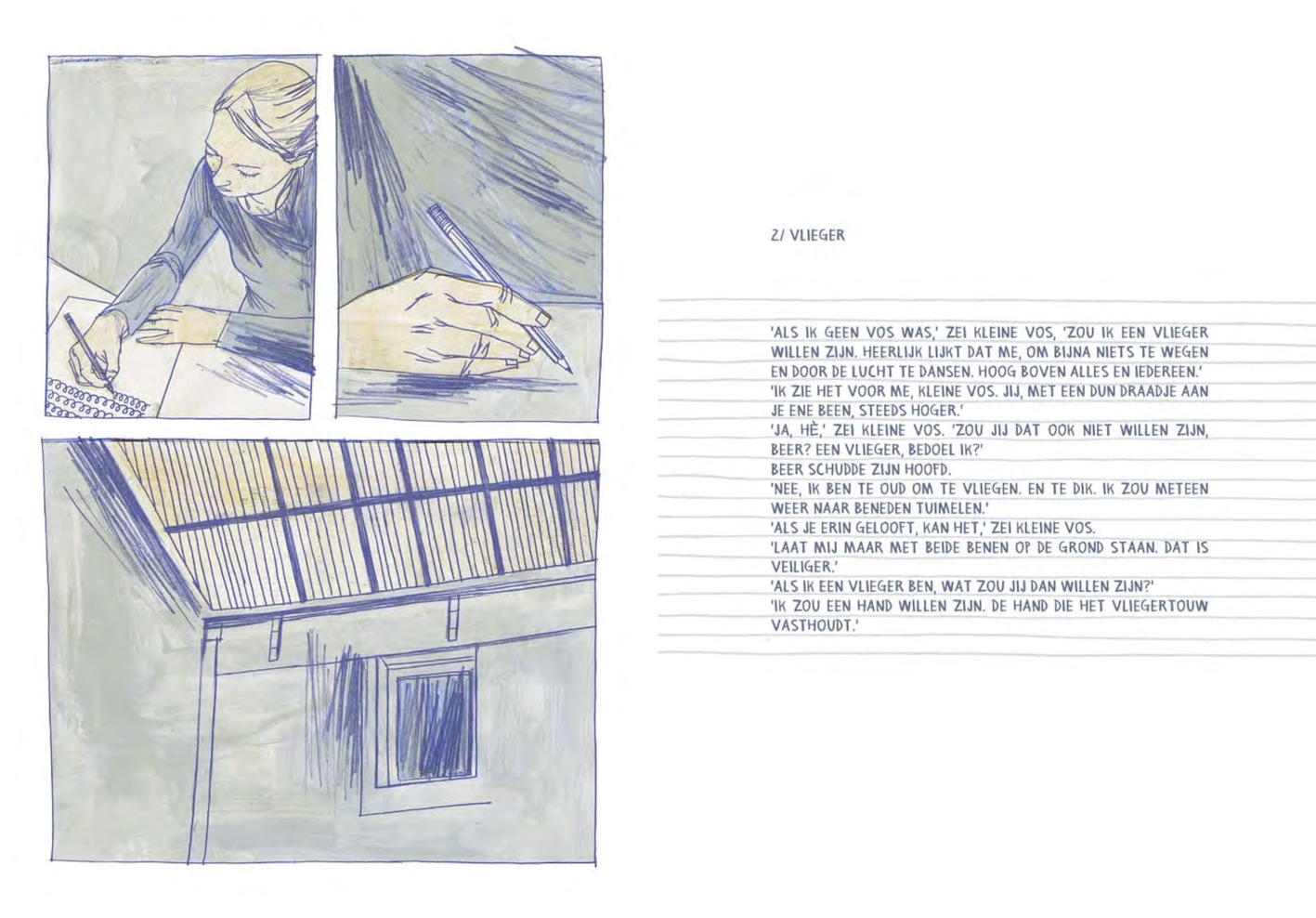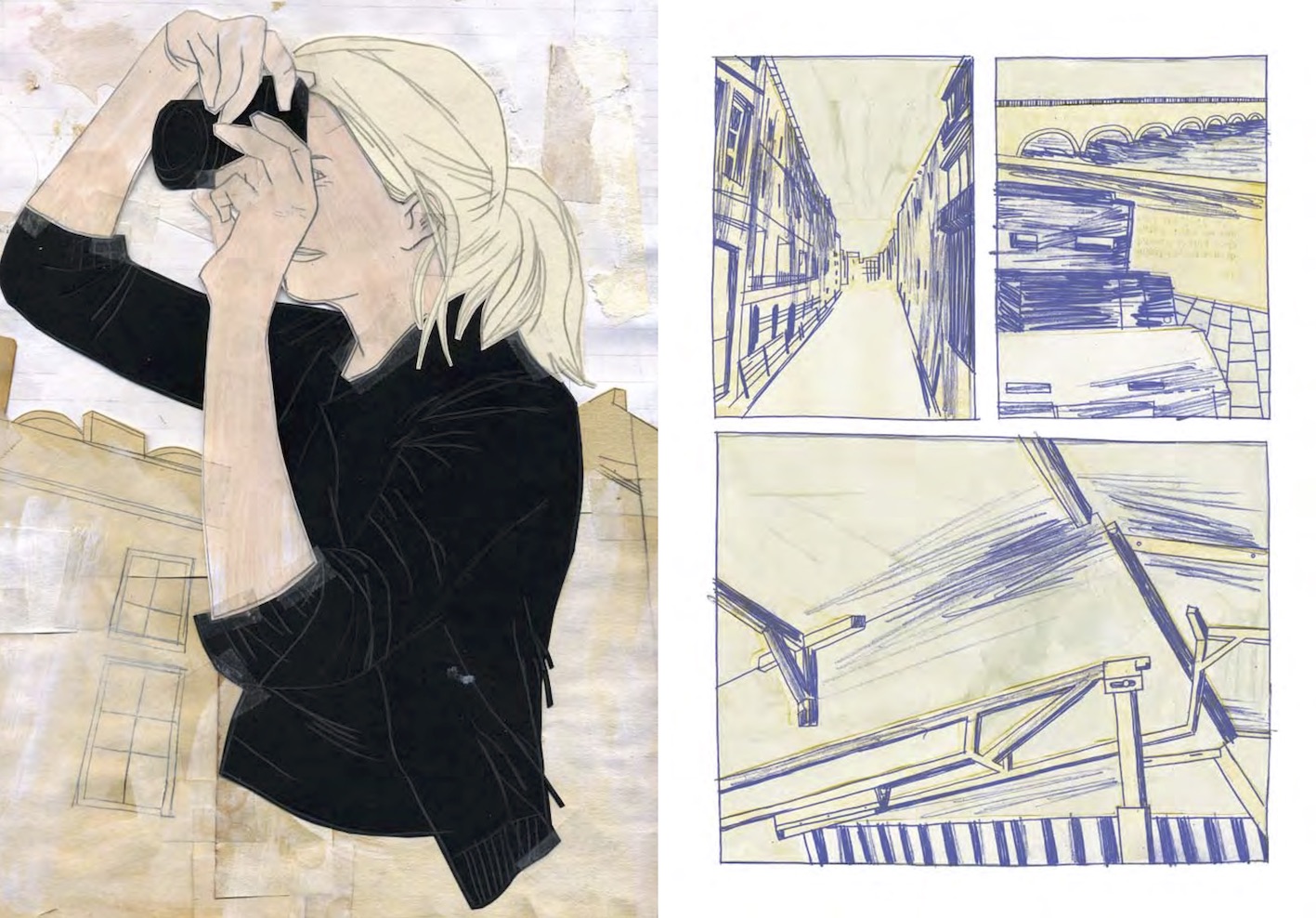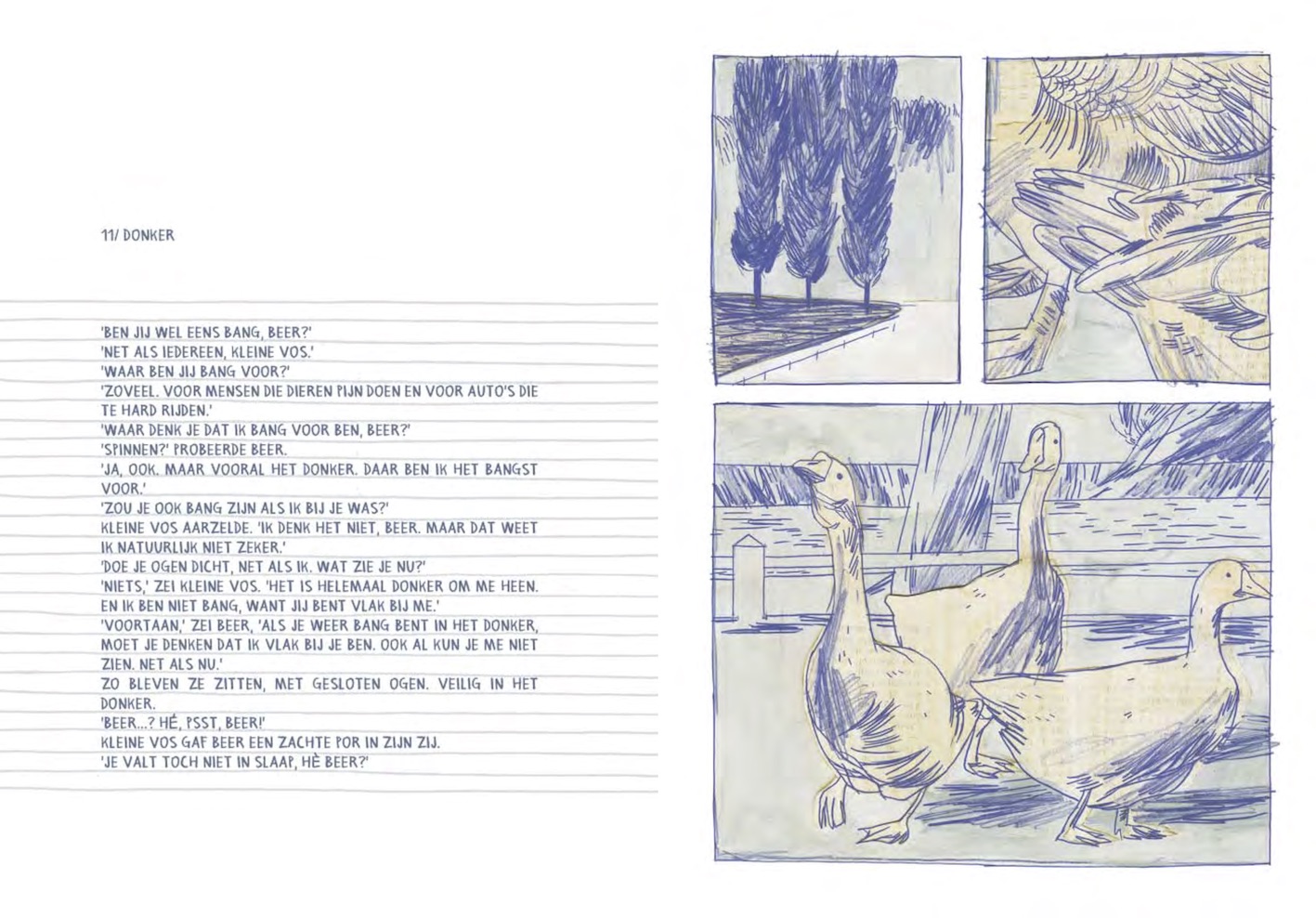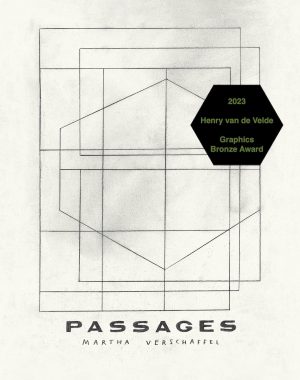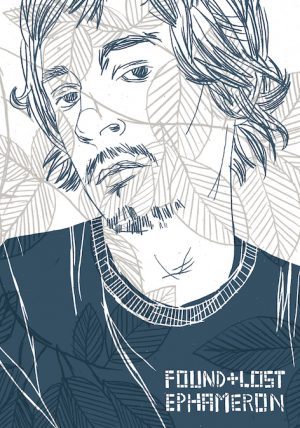Beschrijving
Scroll for text in English
Een jong meisje werkt aan een kinderboek. Ze vertelt daarin over een meisje en een man, Kleine Vos en Beer. Die ontmoeten elkaar af en toe op een vaste stek – een bank in een stadspark. De schrijfster heeft moeite haar boek af te ronden, want ze gebruikt het verhaal ook om helderheid te scheppen in haar eigen leven.
Is zijzelf het meisje? Wie is dan Beer en waarom ging hij weg? Voor de lezer die over haar schouder meeleest, roept elk antwoord nieuwe vragen op.
—
A young woman is working on a children’s book. She tells the story of a girl and a man, Little Fox and Bear. They meet in a city park, always on the same bench. The writer has trouble finishing her book, partly because she uses the story to put one and one together in her personal life. If she is the girl, then who is Bear and why did he leave? For us, reading over her shoulder, each answer raises a new set of questions.
Is Weg <Gone> a comic book? Not exactly. A picture book then? Only half. Although Ephameron’s images are framed and ordered in a sequence, there are no text balloons to be found. Pieter’s lines neatly keep to their own pages. The opening sequence is the only exception. We witness how the hands of the writer wrestle with the blank page in front of her. Letters are written and erased again. From there on, words and pictures follow their own path.
The young woman wanders around in the searching though firm lines of Ephameron, while Pieter’s text unfolds in a playful and imaginative dialogue between Little Fox and Bear. The final frame ties the ends back together, in telling images and suggestive words. Youthful dreams and adult reality meet in an intimate world that is stripped of all excess.





